- Administrator
- Albums and Singles
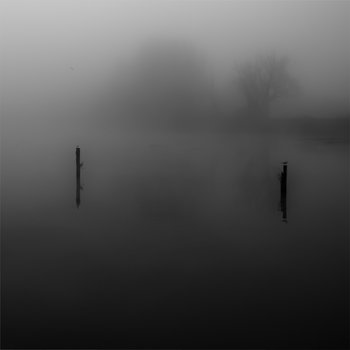
Western Songs marks the first time Nathan Amundson is releasing music under his own name. This record is his first for Silentes, and features two side-long late night instrumental guitar jams evoking the vast, arid landscape surrounding his home state of Colorado.
More information can be found here.
Read More
- Administrator
- Albums and Singles

Rick Bishop picked up a new guitar in Switzerland, and by the time he got to Tangier, these songs fell out! Of the moment and in and out of time, the Tangier Sessions demonstrate how far a guitar can carry a man who knows how to ride one.
More information can be found here.
Read More
- Administrator
- Albums and Singles

Soul Jazz Records' new "Punk 45" album charts the rise of underground punk in the midwest city of Cleveland, Ohio, which for many people is the true birthplace of punk music in the mid-1970s.
Featuring a fantastic collection of punk 45 singles from Cleveland groups including Pere Ubu, Electric Eels, The Pagans, Rockets From The Tomb, Mirrors, X–X and more.
The album comes complete with extensive text written by Jon Savage as well as exclusive photos and original record artwork. CD comes with large booklet and thick slipcase. Vinyl edition is on deluxe gatefold double-vinyl complete with with free download code.
The album follows on from Soul Jazz Records' earlier Punk 45 albums about USA and British punk (Kill The Hippies! Kill Yourself! and There Is No Such Thing As Society), pre-punk (Sick On You! One Way Spit!) as well as the deluxe cover art book Punk 45.
Extermination Nights in the Sixth City coincides with the release of as a second album about Ohio’s early punk scene, Burn, Rubber City, Burn! – featuring the music scene of nearby Akron.
More information can be found here.
Read More
- Administrator
- Albums and Singles
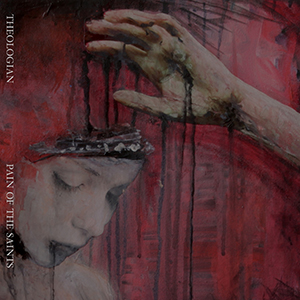 Lee Bartow, the de facto head of Theologian (and previously Navicon Torture Technologies) has never shied away from creating intense music. The newest release, the two disc, two and a half hour plus Pain of the Saints is daunting in both its sound and its epic length. With regular members Matt Slagel and Fade Kainer, Theologian includes a variety of collaborators on this set, resulting in a complex, sprawling bit of sinister noise.
Lee Bartow, the de facto head of Theologian (and previously Navicon Torture Technologies) has never shied away from creating intense music. The newest release, the two disc, two and a half hour plus Pain of the Saints is daunting in both its sound and its epic length. With regular members Matt Slagel and Fade Kainer, Theologian includes a variety of collaborators on this set, resulting in a complex, sprawling bit of sinister noise.
One aspect of Bartow’s work as Theologian distinct from his time as NTT is a greater sense of composition and structure, and amidst the darker, chaotic moments of this record lie some conventional melodies and rhythms.He blends distorted rhythms in the layers of aggressive noise on "Of Foulness and Faithfulness," channeling the earliest forms of industrial before blowing things out with harshness. The churning low end and martial rhythms of "Redemption is an Impossibility" at first are in league with the early 1990s Tesco sound, before Theologian shifts things at the last minutes into a rhythmic EBM sound that sound like an excellent tribute to Skinny Puppy circa 1987.
Much of these two discs lie in some realm between ambient film score and harsh noise, fitting into neither category too easily."Iron Pierces Flesh and Bone Alike" has Theologian leading off with sweeping, film score like synths and buckets of reverb, shifting into a harsher conclusion with a bit of percussion thrown in.On "With Eternal Derision", the open ambient electronics get paired with a dentist drill blast of electronic noise, which stays grounded in dissonance, made more intense by the heavily processed vocals.
The most effective pieces are, for me, the ones that see the project channeling the religious/blasphemy themes of the album most overtly.On "Piss and Jism," Bartow and company bury a dour melody under an overdriven grind, like the profaning of holy music."Their Gelded and Rapacious Hearts" also effectively functions as a mixture of light, almost reverent music with dark, distorted noises and sinister sounds.The set closer, "Self-Flagellation as Faith" (featuring Barren Harvest’s Jessica Way on guest vocals) presents her heavily processed voice and live percussion.The first segment, led by Way, has a more liturgical feel, while the latter half, with Bartow's vocals, goes entirely demonic.
Even at this massive duration, there are few moments that feel like filler or unnecessary.Some of the pieces, such as "Gravity" or "Suppuration" are more than competent synth heavy noise works, but when compared to the more innovative and unique moments throughout the set, they are less captivating.
Pain of the Saints is gripping for almost all of its long duration, and it definitely makes for an intense record.Again, Theologian is one of the projects that disprove that myth that all noise music is just distortion pedals and screaming.It is a rich and devastating record that works brilliantly, with Theologian mixing a variety of textures and moods, though the latter are mostly variations on dark.Coupled with a strong sense of composition on the part of the artists, it makes for a brutal, yet wonderful work.
samples:
 
Read More
- Administrator
- Albums and Singles
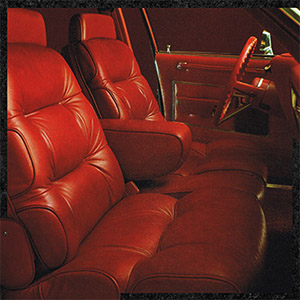 Combining two previous tape releases, with a special edition including a third remix CD, the enigmatic German project defy any sort of classification or clear genre identification. The trio of Christian Dräger, Eric Bauer and Nils Lehnhäuser pull bits of ambient, jazz and drone together without ever fully locking into one style.  The pieces here drastically range from conventional structures to unadulterated, foundation shaking pure bass tones.
Combining two previous tape releases, with a special edition including a third remix CD, the enigmatic German project defy any sort of classification or clear genre identification. The trio of Christian Dräger, Eric Bauer and Nils Lehnhäuser pull bits of ambient, jazz and drone together without ever fully locking into one style.  The pieces here drastically range from conventional structures to unadulterated, foundation shaking pure bass tones.
Most of the pieces that make up this compilation flow almost painfully slow.At times, the three piece (drums, keyboards and bass, as best as I can tell) work together in some sort of clinical deconstruction of the jazz trio ensemble.Rather than the smooth tones and soft rhythms usually associated with the genre, here they are isolated and amplified into pure dissonance."I" from the first disc lets the bass notes reverberate seemingly for eternity, resulting in a violent, vibrating swell of noise.
The band avoids the drums on pieces such as "III," allowing for the individual notes be expanded and sustained as heavily as possible.Disc two's "Dove Gray" has some percussion, but so infrequent that it is hardly able to considered a rhythm, but an accent within an ambient/post-industrial type expanse.The bass is isolated simply into walls of sound on "Pewter Gray Metallic," heavy on the low end but organizationally extremely sparse.
When the three players lock into a more conventional structure, such as the jazzy "I" and "II" from disc 1, or the slowly shuffling "Classic Cream," they create a sound best described as a lounge version of Sunn O))) or Earth’s 2000-era releases.This may seem like a cheesy gimmick, but it is anything but.Rather than corny, it has a disquieting, disturbing feel.The instrumentation is familiar, but played with such a deliberate slowness, it just sounds "wrong" in the best possible way.
A limited run of the double disc set includes a third disc of remixes by OKR.The Spartan elements of Laube's original work are extracted and used to construct extremely different works out of them.The first piece takes the tones and minimal sounds that featured heavily on the first disc and bathes them in layers of reverb, with OKR filling in the mix and giving a light ambient drift sensibility.The second piece piles the layers on more into a dramatic film score type piece, while the third picks up the pace and builds a melodic sequence and synth pads out of the stark tones.
Laube’s sound is one that is extremely familiar and recognizable, but performed and recorded in such a way to be anything but comfortable.It is not exactly dark music, but disquieting and just enough out of place to be unsettling.It is that uniqueness and dissimilarity to anything else that makes it a gripping and occasionally perplexing album.
samples:
 
Read More
- Administrator
- Albums and Singles

Soul Jazz Records' new "Punk 45" album Burn, Rubber City Burn charts the rise of the music scene in the mid-west city of Akron, Ohio at a time when the city and the rubber industry it was associated with was in deep decline.
Featuring a fantastic collection of Akron groups including Devo, The Bizarros, Rubber City Rebels, Jane Aire, Chi-Pig, The Waitresses and more.
The album comes complete with extensive text as well as exclusive photos and original record artwork. CD comes with large booklet and thick slipcase. Vinyl edition is on deluxe gatefold double-vinyl with free download code.
The album follows on from Soul Jazz Records' earlier Punk 45 albums about USA and British punk (Kill The Hippies! Kill Yourself! and There Is No Such Thing As Society) as well as the cover art book Punk 45.
Burn, Rubber City Burn! coincides with the release of as a second album about Ohio's early punk scene, Extermination Nights in the Sixth City – featuring the music scene of nearby Cleveland.
More information can be found here.
Read More
- Administrator
- Albums and Singles

The Summoner comes 4 years since the last Kreng album Grimoire and 3 years since the massive retrospective box set Works for Abattoir Férme 2007-2011. A lot has happened in between, and this new recording can be seen as quite the departure from the aforementioned.
His most personal album to date, The Summoner is based around the 5 stages of mourning and is made after a year of losing several close friends. Hard enough material to work on, he decided to add a 6th stage, entitled "The Summoning" to be able to arrive at the finalé, "Acceptance."
Conjuring up the spirit of György Ligeti, the first half of the album is made up entirely of 12 string players being directed to play around, make noisy clusters and crescendos, moving you between "Denial," "Anger," "Bargaining" and "Depression." In fact, The Summoner is the first Kreng album NOT made by hordes of samples. Music to really dig deep into.
Following into the second part of the album, twists and turns are taken and it's hard to know where exactly you are. The Summoning's haunting organs and smoke-filled chambers lead you in to an earth- shaking wall of guitars, drums and bass courtesy of Belgian doom band Amenra. Leaving you in a state of shock, the album closes in an incredibly heartfelt and quiet way with the fittingly named "Acceptance."
More information can be found here.
Read More
- Administrator
- Albums and Singles
 Polish artist Sebastian Banaszczyk once again demonstrates another leap in compositional development with his Bionulor project. This work, a 3" CD constructed from sounds extracted from Erik Satie's piece of the same name, features some noticeable elements from the original piece. As a whole, however, it has a sound that is unquestionably the work of Banaszczyk.
Polish artist Sebastian Banaszczyk once again demonstrates another leap in compositional development with his Bionulor project. This work, a 3" CD constructed from sounds extracted from Erik Satie's piece of the same name, features some noticeable elements from the original piece. As a whole, however, it has a sound that is unquestionably the work of Banaszczyk.
Broken into seven smaller segments that roughly follow the evolution of the overall piece, Sebastian maintains an overall lighter and sparser sound compared to his earlier works.The first two pieces, VEX.01 and VEX.02 are kept quiet, with a rhythmic surge of sound, never too loud or dense.On the former, Banaszczyk quickens the pace and eventually blends in some odd creaking-like dissonant noises that drop away into the second piece."VEX.02" sees him keeping the tonal swells but with the addition of an infrequent tweeting and high pitched ringing noise towards its conclusion.
The transition to "VEX.03" is more dramatic, with the tones replaced by some low, bass heavy pulses and an occasional fragment of what almost sounds like a traditional keyboard.Textures that seem to be culled from digital interference (likely from a cell phone and computer hard drive) make for texture, paired with the almost-melodic keyboard passages.Banaszczyk keeps these elements in "VEX.04", but here things are kept a bit more quiet, and the overall composition feels lighter and looser compared to the more rigidly academic styles that preceded it.
The final three pieces are shorter and somewhat simpler in their composition."VEX.05" has the same loose feel as before, but sounding like it is made up more of reversed tones from the first piece."VEX.06" has him heavily using the interference noise from before, with an odd clicking sound that at first made me think my headphones had become physically damaged, and the final segment is the most boisterous, with heavy electronic tones and sounds resulting in a less than subtle sound.
Banaszczyk's approach of "sound recycling" could easily result in a mass of formless, distorted noise that could be culled from any source, but his focus on composition and structure prevents that from being an issue.Instead, Vexations has him presenting a clear sense of thematic structure and organization, reverently recalling Satie's source work while still making it very much a Bionulor work.
samples:
 
Read More
- Administrator
- Albums and Singles
 With a true collaboration happening between these two bands, I was not expecting any sort of subtlety or restraint, and my initial thoughts were proven to be true. I was, however, planning to hear a lurching mass of distortion and excruciating vocals, and that is exactly what is here. Neither artist clearly fits into the standard metal templates, and with them working together here, that is all the more apparent.
With a true collaboration happening between these two bands, I was not expecting any sort of subtlety or restraint, and my initial thoughts were proven to be true. I was, however, planning to hear a lurching mass of distortion and excruciating vocals, and that is exactly what is here. Neither artist clearly fits into the standard metal templates, and with them working together here, that is all the more apparent.
Probably the most applicable subgenre that I could use to describe this album would be "doom," but even that is too simplistic of a label.No stoner rock clichés, no cheeseball Satanic imagery, and just a Sabbath influence, rather than emulation define You, Whom I've Always Hated.The lengthy album opener "Her Strongholds Unvanquishable" may begin with oddly processed percussion and squalling guitar, but soon becomes a dense, swampy mess that is heavy on the middle and low end.Dirge-like, with a noisy weird passage in the middle, it has a slowly lumbering pace, but majestically so, with a sense of epic drama.
The short "He Returns to the Place of His Inequity" is the other experimental moment on the record.Melodic guitar, heavily processed random noises and scrapes, and a hushed spoken word vocal track make this song the most out there of the ones on the album.The remaining songs are a bit less experimental, but still enjoyable as hell.The dull thudding drums and overdriven bass of "Beyond the Realms of Dream, That Fleeting Shade Under the Corpus of Vanity" may begin with a caveman stomp, but soon has the two bands constructing a molten lava groove with a wonderfully noisy chorus.
The title of "The Devils of Trust Steal the Souls of the Free" may be one of Thou's nods to 1990s music (being a line from Nine Inch Nails' "Happiness in Slavery") but the sound is very different:a simple, but compelling rhythmic murky pound make up the bulk of the song.More overtly, however, is the two bands' cover of NIN's "Terrible Lie", bearing little resemblance to the original.Like The Body's take on Body Count’s "Cop Killer", the vocals are there and lyrically faithful, but other than a brief shitty electronic sample at the beginning, the sound is anything but Trent Reznor's goth kid mope.Instead it trudges around, filling the originally sparse verse moments of the original with a wall of distorted guitar.
The digital and CD versions of the album also include the previous Thou/The Body collaboration, Released from Love, that was previously only available on vinyl.The sound is unsurprisingly consistent with the newer work:slow sludgy riffs and eventually pounding metal most specifically define "The Wheel Weaves as the Wheel Wills", and "Manifest Alchemy" is all hysterical screaming with the rest sounding like Sabbath played too slow.Another cover, this time of Vic Chesnutt's "Coward" is the standout as far as uniqueness goes.An oddly light guitar melody leads off, pared with thumping drums and distorted bass, and eventually an almost 1980s metal guitar solo that somehow works brilliantly.All the while the uncomfortable vocals are processed to be distant, sounding like someone potentially dangerous screaming outside of the window.
The previous material of Released from Love fits in perfectly with You, Whom I’ve Always Hated very well, sounding like a long album rather than two separate releases combined.It is an ugly, abrasive record that borrows heavily from the world of heavy metal, but with the two bands putting things together just enough off kilter to be appealing to people such as myself, who have only sporadic interest in the genres they may draw from.
samples:
 
Read More
- Administrator
- Albums and Singles
Medical Records continues its exploration of the '90s with a reissue of Laika's 1994 masterpiece Silver Apples Of The Moon, originally released on the iconic Too Pure label.
The members of Laika hailed from various interesting places: Margaret Fiedler was actually born in Chicago, but relocated to London to pursue musical interests and was one of the vocalists and songwriters for Moonshake (also on Too Pure), as well as a previous member of Ultra Vivid Scene. Guy Fixsen was (and still is to this very day), a renowned audio engineer and producer. In fact, he was involved in the infamous production of My Bloody Valentine's Loveless. Bass player John Frenett was also in Moonshake and left that band the same time as Fiedler after their first USA tour. The drummer, Lou Ciccotelli, previously played in Kevin Martin's band God. The band also had a saxophonist, Louise Elliot.
Silver Apples Of The Moon was Laika’s first album and is almost unclassifiable. Taking a very forward-thinking approach, the sound is the result of a very unique equation of live drums/percussion, layered guitars/samples, and diverse analog tones that all fuse together to form a hypnotic polyrhythmic combination that was truly original. Too Pure was known for its cutting edge roster including Seefeel, Mouse On Mars, and Pram. Laika was certainly no exception to these game-changing artists.
The opening track "Sugar Daddy" explodes from the first note into a percussive frenzy that is quite dizzying before it smolders a bit and is layered with various samples that propel the track. "Coming Down Glass" exudes a more mutated trip-hop form with thick, powerful bass lines. Other stand-out tracks include the intense "Red River" and the harder track "44 Robbers." While it is exceedingly difficult to draw any similarities for this album with other artists, one can make loose associations with some of the most challenging percussive experiments of Miles Davis, the brilliant exotica of Martin Denny, and the gut-churning bass magic created by Jah Wobble in early PIL.
Fans of the crucial and long-lasting mark left by the Too Pure artists such as Pram and the like will definitely want this album if they have never heard it. For most fans, the original vinyl LP was not available or accessible (especially in the USA). The masters for which this reissue is sourced were directly transferred from the vinyl master source material (courtesy of Beggars Limited) with the utmost care and quality. The LP jacket features similar original artwork and the LP contains a bonus insert with an engaging interview and write-up by Dave Segal featuring exclusive interviews with Guy Fixsen and Margaret Fiedler.
More information can be found here.
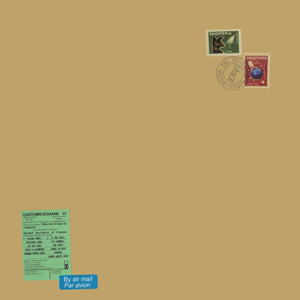
Read More
- Administrator
- Albums and Singles
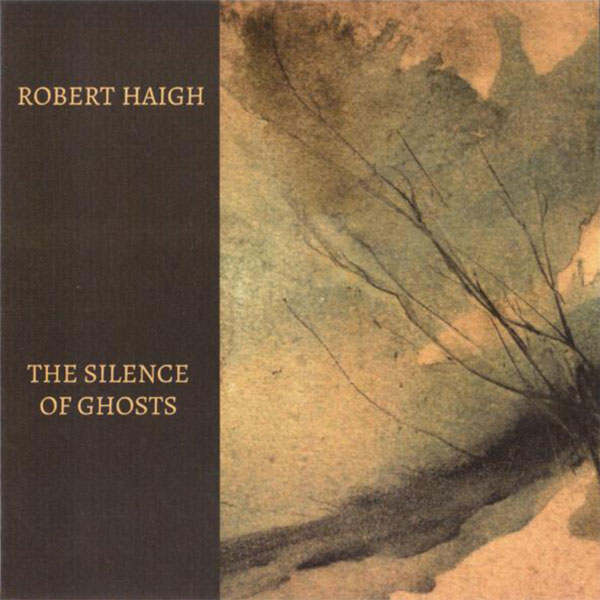
Veteran UK musician/composer Robert Haigh returns to Siren for the first time in three years. Although not a major departure from Haigh's previous work for the label (three albums of piano music released between 2009 and 2011 subsequently known as the Siren Trilogy) this 18 track collection benefits from a wider pallet of subtle sonic textures. With The Silence Of Ghosts Haigh has visioned a journey through strange and beautiful terrain - a topography of fragile melodies and muted discords.
The opening track, Song Of Selene, is a spacious, hymn-like nocturne; hauntingly stark and reflective. In Another Light is an off-beat waltz (3/4, 2/4 time) in which a cyclic theme explores major and minor keys with subtle electronic shimmers. Crooked Mile is a Satie-esque outing featuring an angular melody that climbs through strange modal keys to a discordant destination. The title track The Silence Of Ghosts is achingly melodic, yearning and touching - a eulogy to things that have passed. Where later tracks such as Happening no. 1 and 2 explore Haigh's gift for improvisation, the ghostly Demian Air presents a deep sonic excursion through electronic textures where submerged piano notes echo across alien terrain. The closing track, New Cross Counterpoint, was originally based on a refrain from Haigh's own earlier composition of the same name (from A Waltz In Plain C). The track with its Glass-like arpeggiated piano counterpoint subsequently took on a life of its own but Haigh decided to keep the title anyway since it 'felt right' for the piece.
The Silence Of Ghosts is a mature and deeply reflective work employing Robert Haigh's distinctive subverted melodies and spacious counterpoint. This collection should appeal to fans of Satie, Debussy, Harold Budd, Philip Glass and Max Richter.
Artist Name : Robert Haigh
Title : The Silence of Ghosts
Format : CD (limited edition 700 copies) with miniature jacket sleeve
Catalogue Number : Siren 024
All tracks written and performed by Robert Haigh
Mastered at Skye Mastering by Denis Blackham
Artwork by Andrew Chalk
Sleeve by Saul Haigh
Track listing:
1. Song Of Selene
2. In Another Light
3. Crooked Mile
4. Happening no. 1
5. The Silence Of Ghosts
6. Twelve Tone Poem
7. Fragile Again
8. Lost Rites
9. Pentatonic Dream
10. Crossing The Water
11. Bells Of Lyonesse
12. Second Nature
13. A Cycle Of Flattened Fifths
14. Happening No. 2
15. Thieves Of Symmetry
16. Demian Air
17. Years
18 .New Cross Counterpoint
Read More